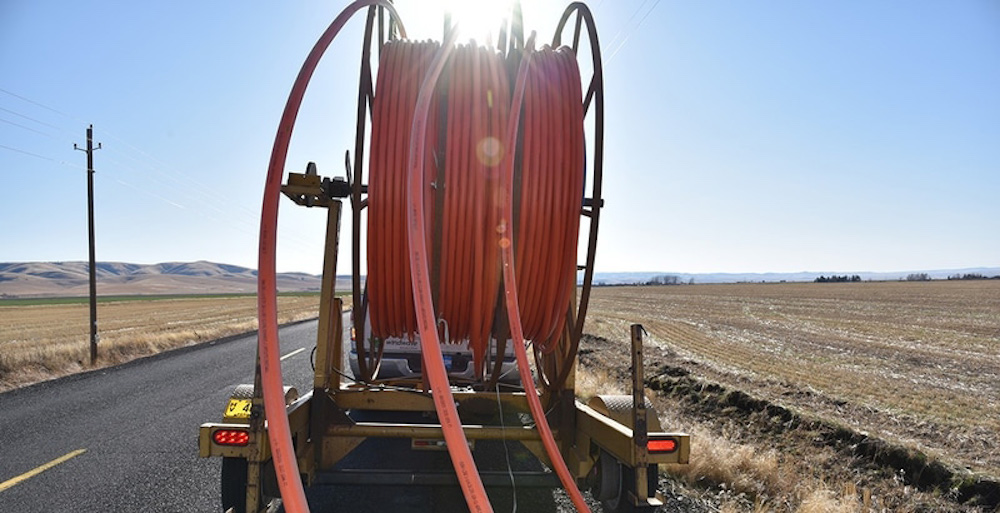
- Details
- By Chez Oxendine
- Economic Development
There’s more broadband funding on its way to Indian Country, even as the price tag on fully wiring tribal communities continues to rise.
The National Telecommunications and Information Administration said on Wednesday that it launched a second funding opportunity that would make another $980 million available under the Tribal Broadband Connectivity Program (TBCP). The new round of broadband funding builds on nearly $1.78 billion that has already been deployed throughout Indian Country over the past two years.
As in the prior funding round, tribes can use the funds to build out network infrastructure and support use and adoption programs, such as supplying laptops or covering monthly provider bills for tribal citizens in need. Applications are now open and will close Jan. 3, 2024, according to an NTIA statement.
“It’s a historic moment,” Assistant Secretary of Commerce for Communications and Information Alan Davidson said during a press call this morning. “This is our generation's big infrastructure moment. This is our chance to connect everyone in America with the tools they need to thrive in the modern digital economy.”
The funding opportunity will include “minor” language changes to the existing program and will encourage the use of updated Federal Communications Commission connectivity data as compared to the last grant award, Davidson said. NTIA also doubled the timeframe for submitting applications, addressing a common criticism leveled at the TBCP’s initial implementation, which gave tribes only three months to submit proposals.
There will be no changes to eligibility. The program will be available to federally recognized tribes attempting to improve connectivity on their reservations or in their communities. Preference will be given to applicants who did not receive an award under the original funding opportunity, Davidson said, as well as for projects that prove “cost-effective.”
That phrase — “cost effective” — means something different in Indian Country, where rural communities and geographical challenges typically make building out broadband networks more expensive, Davidson said. When considering the cost-effectiveness of a project, the NTIA will look at how new fiber will support fixed wireless projects or other connectivity programs down the road, not just how many households are immediately connected, he said.
“We've been given this ambitious mission, which is to connect everyone in America with reliable high speed internet service. We know we need to use the funds available to us wisely and carefully. We've encouraged states and tribes to be cost-effective and it's a major factor for us,” Davidson said.
That means taking the long view on how broadband projects built today will serve Native communities in the years ahead, he said. “We know when we build infrastructure and we push out fiber into some of these communities, it provides the infrastructure that will provide for programs in the future. We know people will be able to use the infrastructure we're building for backhaul, and ultimately a lot of good will be done by the infrastructure we're building.”
An escalated price range
Today’s funding opportunity builds on a program whose initial allocation quickly proved insufficient for overwhelming demand, and still fell short with a second allocation after initial proposals came in from tribes.
The program’s initial investment of $980 million, allocated under the American Rescue Plan Act (ARPA) in 2021, paled in comparison to the colossal need for connectivity in Indian Country, in particular in the wake of COVID-19, according to prior Tribal Business News reporting.
The initial wave of proposals totaled over $5.8 billion. In response, in 2022, the Infrastructure Investment and Jobs Act allocated a further $2 billion to the TBCP. The NTIA chose to increase the initial funding opportunity to $1.98 billion, and then to create this new funding opportunity with the remainder.
In total, that leaves the TBCP at nearly $3 billion in funding—an amount well short of the initial ask from tribes and less than half the true cost of getting Indian County fully online, according to Matthew Rantanen, vice president for Golden State Network, a project of the Corporation for Education Network Initiatives in California.
Rantanen pointed to research he and colleagues did for the federal government in 2016 that initially placed the cost of connecting 8,000 missing miles of fiber — gaps in connections between existing fiber backbones that could reach into Native reservations — would cost between $7 billion and $8 billion.
That was pre-pandemic. Now, the cost is closer to between $10 billion and $11 billion, Rantanen said.
“With COVID, lack of computer chips, lack of production of fiber and conduit equipment, and the escalation of construction prices, you now have an escalated price range,” Rantanen said. “You’re looking at a much bigger problem.”
To address the budget gap, the NTIA has encouraged tribes to seek funding through its other grant programs, such as the Broadband Equity, Access, and Deployment (BEAD) program rolled out earlier this month. That program delivered $42.5 billion to all 50 states and US territories that would, in turn, be subgranted as needed to support projects in those regions.
Tribes will have to fight for that money, where they’ll be pitted against other organizations and need to make their case to states, per prior Tribal Business News reporting. The Tribal Broadband Connectivity Program, in comparison, provided a fairer environment with a bigger emphasis on meeting tribal needs, Rantanen said, but it was just the first step.
“This program laid down a foundational start to this, but it's not the end-all solution,” Rantanen said. “There’s still a need out there that needs to be met.”
